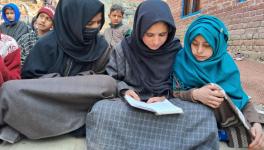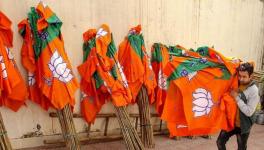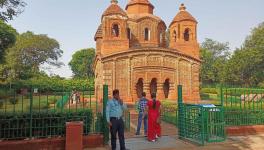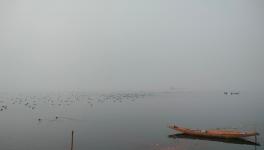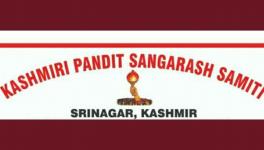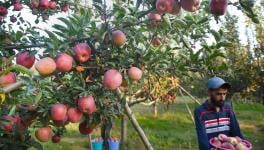Fading Splendor: Kashmir's Rich Culture and Heritage Under Siege
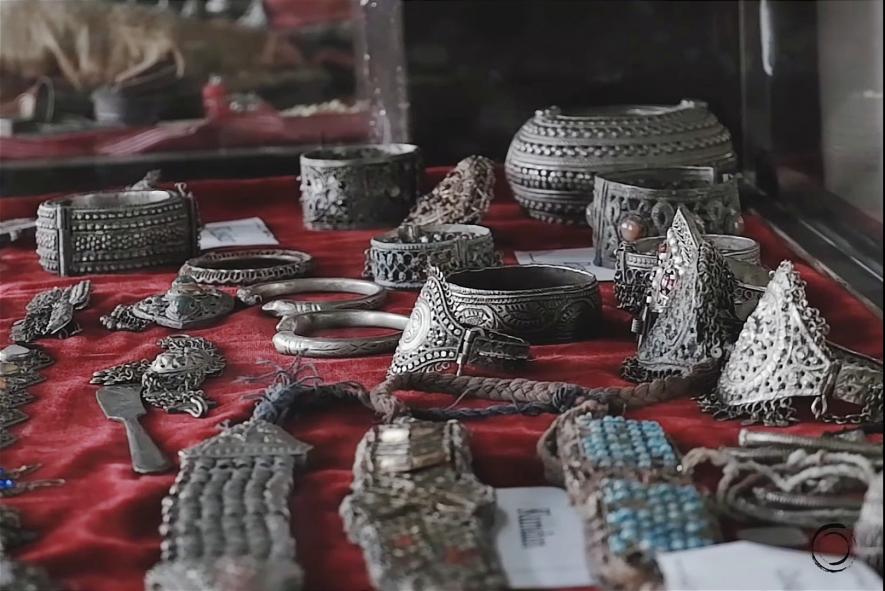
Exquisite Kashmiri Ancient Jewellery on Display at Bait-ul-Meeras. Photo: Mehar zargar
Amidst the awe-inspiring beauty of the Himalayan landscape, Kashmir has been renowned for its mesmerising charm and diverse cultural heritage. Yet, beneath this picturesque exterior lies a heartrending truth- a sorrowful trail of disappearing customs that once defined the essence of this historic region.
With each passing day, Kashmir witnesses the slow erosion of its cherished culture, heritage, language and culinary treasures. Centuries-old customs that once bound communities together are now slipping away into the sands of time. The vibrant threads of Kashmiri identity, woven delicately through generations, are now at risk of fraying.
History of Kashmir’s Culture, Heritage, Language and Attire
Zareef Ahmad Zareef, a renowned poet, shared valuable insights into the origins of Kashmir's culture, tracing its roots back through time to understand the essence of its uniqueness.
“Kashmir is renowned as one of the most breathtaking places on earth, often called the crown of India. The origin of Kashmiri culture and heritage is a complex and multifaceted journey that spans thousands of years. The region of Kashmir has been a melting pot of various influences and civilisations, contributing to its unique cultural identity. It has a rich history dating back 5500 years, with 4000 years of Hindu rituals, customs, and Sanskrit language being prevalent. This was followed by a 1200-year Buddhist period."
Zareef goes on to talk about the influence of Buddhism on the region.
"Around 2,500 years ago, Buddhism emerged and gained prominence in Kashmir. This marked a significant shift in the cultural landscape of the region. Buddhist monasteries, stupas, and art flourished, leaving a lasting impact on the cultural heritage of Kashmir. During the reign of Ashoka circa 300 BC, it became an important part of the Mauryan empire. Ashoka, known for his support of Buddhism, profoundly influenced the region’s cultural and religious landscape. Later, during the Kushana period, around 100-150 CE, especially during the reign of Kanishka, Kashmir emerged as a vital centre. Kanishka was a prominent Kushana ruler who actively patronised Buddhism, further enriching the region’s cultural heritage."
In the medieval period, Kashmir gained after becoming a centre of trade and cultural exchange. Its strategic location on the historic silk route contributed to it.
"Traders from Central Asia, Persia, China, Iran, Samarkand, Bukhara, Turan, Turkistan and other regions brought with them their traditions, languages, and customs, which mingled with the local culture, further enriching Kashmir's heritage," Zareef added.
Islam came to the region around the 14th century through Sufi saints, including Syed Sharfudding Bulbul Shah and Mir Sayyid Ali Hamdani.
"With the adoption of Islam, Kashmiri Culture and cuisine also evolved. Before that, Kashmiris followed a simple lifestyle, wearing a piece of cloth called “Looch” that covered their entire body," Zareef said.
The cultural exchange following the introduction of Islam led to the region embracing new clothing styles, such as Yazaar (trouser), Kameez (shirt), Paposh (traditional Muffler), and Dastar (a hat made of cloth which was used to cover the head).
"They also embraced the paraben (now known as pheran), a loose cloth worn by the traders in winter. Cuisine underwent significant changes as well, and Kashmiris transitioned from a vegetarian and non-spicy diet during the Hindu and Buddhist eras to incorporating Muslim-influenced dishes like Kabab, Roganjosh, Tabak maaz, Roganjosh-Hindi and Aab Gosh, which were then consolidated into the famous Wazwan- a single Tram (plate) containing the entire menu."
Origin Of the Kashmiri Language
Zareef also talked about the historical context of the Kashmiri dialect.
"It is thought that the Dardic group of Indo-Aryan languages is where the Kashmiri language originated," he said.
The wider Indo-Aryan language family, which encompasses tongues spoken in South Asia, contains the Dardic languages as a subset. Particularly, Kashmiri is categorised as a Northwestern Dardic language.
The ancient Gandhara region, which included portions of modern-day eastern Afghanistan, northern Pakistan, and the Kashmir Valley in India, is where the Dardic languages, including Kashmiri, have their historical origins. These languages developed over many years through interactions with various linguistic groups.
With early traces of its use reaching back to ancient Sanskrit literature and inscriptions, Kashmiri has a rich literary legacy and historical significance. It evolved into a unique language with its alphabet and grammar over time. Since there are no written documents from that time, it is difficult to pinpoint exactly when the area's first Dardic language was initially used.
"As the region of Kashmir and its surroundings witnessed various historical migrations, invasions, and cultural exchanges, the languages spoken there evolved and diversified, and oral transmission of languages and cultures was the norm in antiquity," he said.
“Today, Kashmiri stands as one of the major languages of the Indian subcontinent, spoken primarily in the Kashmir valley and neighbouring regions,” he added.
Kashmir's Fading Tapestry
A rich tapestry of cultural history, including its unique clothing and delectable cuisine, is gradually disappearing in the Kashmir valley. There is increasing anxiety among locals about retaining their distinctive identity and traditions as modernisation and globalisation encroach on the area.
"Kashmiri attire has represented the region's identity and heritage for decades. Traditional clothing is having trouble preserving its significance and relevance, nevertheless, as modern fashion gains in favour. According to a local store owner in Srinagar who sells Kashmiri handicrafts and traditional attire, the younger generation, in particular, prefers Western apparel, which is causing a slow drop in the demand for age-old craftsmanship and artisanal skills," Zareef said.
Similar changes are taking place in Kashmiri cuisine, which is well known for its mouthwatering flavours and aromatic spices. The authenticity of Kashmiri cuisine is in danger of becoming overshadowed or diluted as fast-food restaurants and other global culinary influences spread over the area.
For generations, the Wazwan has been more than just a meal; it has symbolised warmth, hospitality, and unity. In this elaborate culinary spectacle, expert chefs, affectionately known as wazas, meticulously craft dishes like Rogan Josh, Yakhni, and Gushtaba, following ancient recipes passed down through the ages. The meticulous preparation of each delicacy takes hours, and the feast is often served to commemorate momentous occasions such as weddings and festivals.
Yet, the traditional Wazwan now faces many challenges jeopardising its survival.
“One primary reason for its decline is the scarcity of skilled wazas, as the younger generation shows dwindling interest in carrying forward this culinary legacy. Modern lifestyles, urban migration, and the allure of alternate professions have resulted in fewer apprentices willing to invest the necessary time and dedication to master this art,” said Ghulam Nabi, a famous waza (chef) from Sher-i-Kashmir, Srinagar.
He further said, “Moreover, the evolving Kashmiri society has affected the demand for the Wazwan. The influence of Western culture and the rise of fast-food trends have created a growing disconnect between younger generations and their cultural heritage. The preference for quick and convenient dining options poses a grave threat, pushing the exquisite Wazwan towards the realm of antiquity.”
Language is the cornerstone of culture; it allows for identifying everyone's identity. The dominance of English and Urdu with the introduction of English-medium education in 1932, however, undermined the prominence of Kashmiri. According to Zareef, this tradition has been perpetuated, and as a result, the younger generation is embarrassed to speak Kashmiri.
The usage of clay utensils is a further custom that is dying off. These handcrafted containers have played a significant role in daily life for many years because of their utilitarian and health benefits.
The history of pottery in Kashmir dates back centuries, with artisans skillfully crafting a wide array of utensils, including pots, pans, cups, and containers. These vessels were made from locally sourced clay, a natural and sustainable material abundant in the region. The porous nature of these vessels allowed for natural evaporation, keeping the contents cool and preserving the nutrients of food items. However, in the face of modernisation and changing lifestyles, this once prominent aspect of Kashmiri culture is fading away, raising concerns about its impact on public health and preserving the region’s identity.
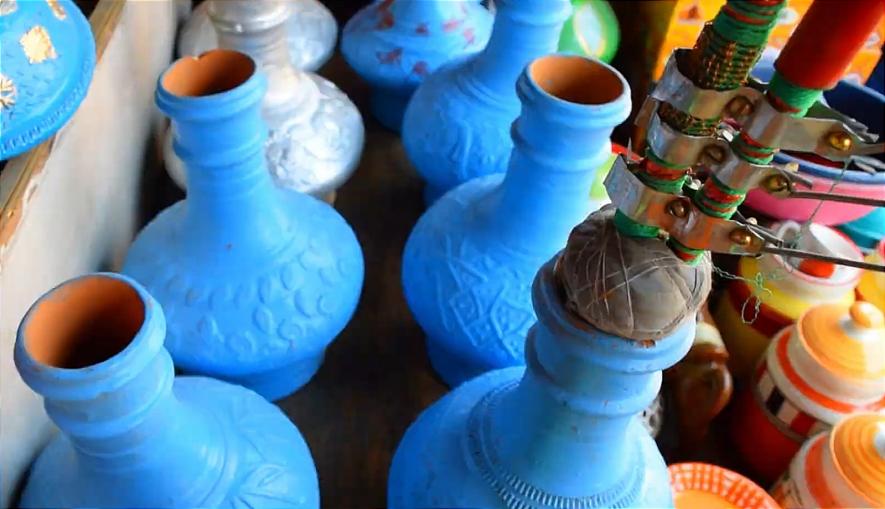
Authentic Kashmiri Pottery Items, Including Jajeer, Available at Local Shop in Srinagar. Photo: Mehar zargar
“Apart from its aesthetic appeal and eco-friendliness, pottery utensils were associated with significant health benefits. The gradual cooling of water and other beverages in clay containers resulted in a refreshing and gentle consumption experience. Moreover, the porous nature of the pottery allowed impurities to settle, making the water purer and safer for consumption," said Zareef.
He further added, “The shift away from using pottery utensils has unintended consequences on public health. The traditional vessels’ natural cooling properties made them ideal for storing water and other liquids, minimising the risk of contamination and microbial growth. With the decline in the use of pottery, the increased reliance on synthetic materials had potentially led to health issues associated with plastic leaching and metal corrosion.”
The pottery market in Kashmir has rapidly decreased due to competition from materials like porcelain, stainless steel, and aluminium. However, pottery enthusiasts and those who appreciate its artistry still find value in it.
Khazir Ahmad Kumar, an old age resident of Srinagar and a pottery maker, said, “Clay pots are known to preserve the nutritional value of food and help regulate the pH balance in the heart. They also offer minerals and are environmentally friendly. Nowadays, doctors recommend using pottery utensils in kitchens due to concerns about the side effects of other materials.”
As the valley embraces modernisation, efforts to preserve and revive this art form are crucial to safeguard both the health of its people and the essence of its cultural identity.
Conservation Initiatives: Preserving efforts
Amidst these challenges lies a glimmer of hope. Efforts to revitalise the Kashmiri language have gained momentum, with schools and cultural centres incorporating it into their curriculum. Storytelling sessions and poetry recitals are organised to instil pride in the linguistic heritage.
The revival of traditional arts and crafts has been spearheaded by non-profit organisations that provide training and financial assistance to artisans. These initiatives empower artisans to pass on their skills to the next generation by supporting their craft.
Meeras Mahal, a historical gem, is a beacon of hope for safeguarding the region's unique identity for future generations.
A museum in Sopore, it stands as a living testimony to the splendour of Kashmiri architecture and artistic prowess. It was set up by Atiqa Bano, a renowned educationist of Kashmir, in 2001. It is the first and biggest private museum that has over 7000 artefacts to display.
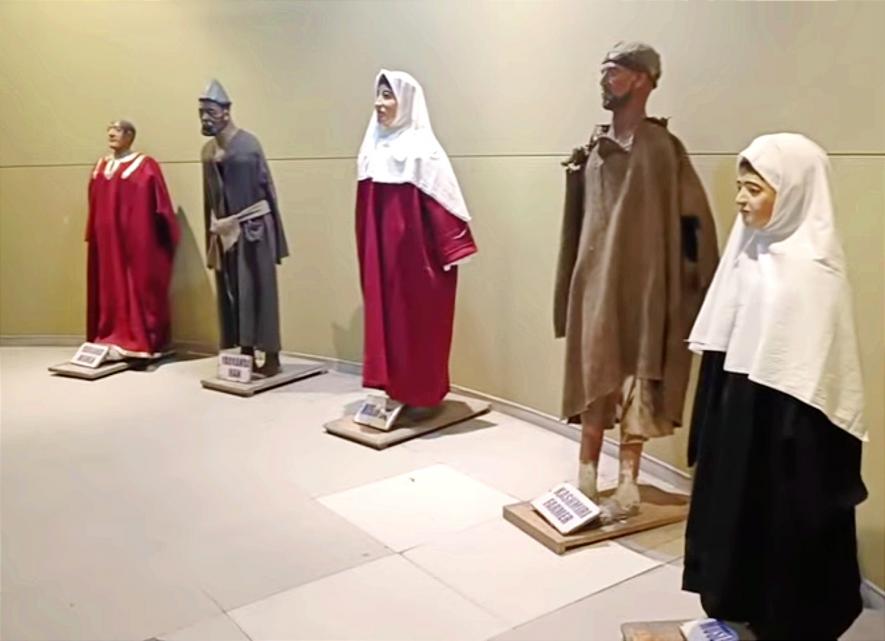
Past Kashmir's Diverse Classes and Attire on Display at SPS Museum. Photo: Mehar zargar
President of Meeras Mahal, Muzammil Bashir, said, “Meeras Mahal Museum aims to preserve the Kashmiri culture and heritage, which is slowly vanishing, for the future generation. Today, children don’t know much about our culture, history, or how we lived and developed.”
“Meeras Mahal is an ethnographic museum where most of the artefacts are items of daily use that were a common sight in Kashmir until the end of the 20th century and are preserved. They used to make everything by themselves, including tiles, clothes, coins, utensils and more,” he further described.
“Several people, including writers, professors, non-governmental organisations (NGOs), students and educationists, are doing good work to preserve the cultural richness of Kashmir through Meeras Mahal,” he added.
Similarly, as the younger generations grow up immersed in a globalised world, the traditional language of Kashmiri faces the risk of fading away, replaced by the dominance of English and Urdu. The consequences of losing the Kashmiri language are profound, as it carries with it a sense of identity and a profound connection to the land and its people.
Asif Tariq Bhat, a young Kashmiri novelist, poet and short story writer, is concerned about the Kashmiri language losing its essence.
“Languages are the essence of a community's identity, reflecting their unique history, traditions, and values. With its beautiful cadence and intricate script, Kashmiri has been a symbol of pride and a thread that binds the region's people together. However, as Western culture permeates through media, technology, and education, it often challenges the significance of native languages.”
Bhat penned his debut novel, Khwaban Khyalan Manz, in 2022 to promote the Kashmiri language and literature.
“One of the primary reasons behind the shift towards English and Urdu is the perception that these languages offer better opportunities in the globalised world. Parents believe fluency in English or Urdu will give their children a competitive edge in education and the job market. As a result, they prioritise teaching these languages, inadvertently pushing Kashmiri to the sidelines,” said Nazreen, a local teacher.
She added, “Moreover, some parents fear associating themselves with their native language may subject their children to discrimination or exclusion, especially in urban areas where English or Urdu may be the medium of communication. This apprehension has further contributed to the diminishing usage of Kashmiri.”
Tasiya Hameed, a young woman from Srinagar’s Batamaloo neighbourhood, runs a YouTube channel called “Kashmir food fusion” to preserve the regional culinary tradition.
“The recipes provided by outsiders lack the ‘Kashmiri touch’, and I didn’t want others to taste our food without the essence of Kashmir in it, which is why I began my YouTube channel and had a positive response from the audience.”
Impacts on Tourism
The tranquil landscapes and age-old charm that once defined the essence of Kashmir are now facing the profound effects of modernisation, casting a shadow over its appeal as a top tourist destination.
Saleem Beg, the former director general of tourism in Jammu and Kashmir and chairman of the National Monuments Authority, provided insights into how cultural changes have influenced the region’s tourism industry.
“The Influx of modernity has brought with it a multitude of challenges to Kashmir’s ecosystem. The rapid pace of urbanisation and infrastructure development has led to the encroachment on natural habitats, putting immense pressure on the delicate balance of the environment. Traditional land-use practices and agricultural techniques that once coexisted harmoniously with nature have been replaced by resource-intensive methods, further exacerbating the strain on the region’s natural beauty."
"The increasing demand for accommodation and facilities has resulted in unchecked construction, often at the expense of the very landscapes that drew tourists in the first place. Once-idyllic vistas now bear the scars of indiscriminate building, disrupting the pristine beauty that had captivated visitors for generations,” he added.
Beg mentioned how the vibrant tapestry of local traditions, arts, and crafts is at risk of fading amidst the sweeping tide of homogenisation.
"As the world becomes more interconnected, the allure of globalisation has led to the dilution of traditional customs, leaving behind a watered-down version of Kashmiri culture that may not resonate as deeply with travellers seeking authentic experiences.”
He called for a balance between tradition and modernity to preserve Kashmir's identity.
Empowering the youth to take ownership of their cultural identity is crucial for preserving Kashmiri heritage. Additionally, digital platforms can be harnessed positively to promote Kashmiri culture globally, sparking interest in the younger generation.
"By taking collective action, fostering pride in Kashmiri culture, and empowering the youth as torchbearers, the valley can ensure that its heritage stands the test of time, captivating future generations with its timeless allure,” said Zareef.
Mehar Zargar is a freelance journalist based in Kashmir.
Get the latest reports & analysis with people's perspective on Protests, movements & deep analytical videos, discussions of the current affairs in your Telegram app. Subscribe to NewsClick's Telegram channel & get Real-Time updates on stories, as they get published on our website.









